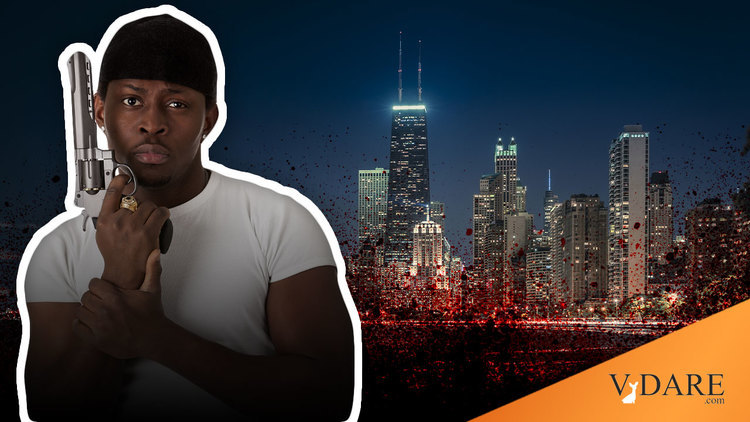


05/04/2015
We hear a lot of commentary these day about how black males are in terrible danger from the police. So it’s worth looking at the personal life choices of America’s most prominent black male, the President.
It’s not well known, but during most, and possibly all, the years that Barack Obama lived in Chicago (1985-2008), he repeatedly chose to reside where he would be at risk from not one but two police departments: the donutcentric but amply-staffed Chicago Police Department and the hard-nosed U. of Chicago Police Department.
You probably think of campus police as being restricted to the, well, campus, but the U. of C. cops are different. They also patrol, strongly, a chunk of the surrounding city of Chicago where students and professors live and/or spend their time.
From Nate’s Silver’s article at FiveThirtyEight, “The Most Diverse Cities Are Often The Most Segregated.”
When I was a freshman at the University of Chicago in 1996, I heard the same thing again and again: Do not leave the boundaries of Hyde Park. Do not go north of 47th Street. Do not go south of 61st Street. Do not go west of Cottage Grove Avenue. 1These boundaries were fairly explicit, almost to the point of being an official university policy. The campus police department was not committed to protecting students beyond the area,2 and the campus safety brochure advised students not to use the “El” train stops just a couple of blocks beyond them unless “traveling in groups and during the daytime.”
What usually wasn’t said — on a campus that brags about the diversity of its urban setting but where only about 5 percent of students are black — was that the neighborhoods beyond these boundaries were overwhelmingly black and poor. The U. of C. has, for many decades, treated Hyde Park as its “fortress on the South Side,” and its legacy of trying to keep its students within the neighborhood — and the black residents of surrounding communities out — has left its mark on Chicago.
On Dustin Cable’s interactive “Dot Map” of racial residency patterns, Hyde Park appears as an island of blue and red dots — meaning, mostly white and Asian students and residents — in contrast to Chicago’s almost uniformly black South Side, designated in green dots. Washington Park, the neighborhood just to Hyde Park’s west, is 97 percent black3. Woodlawn — the neighborhood on the other side of 60th Street — is 87 percent black.
— — —
2 A typical sentence from the campus safety brochure while I was a student:
“The University Police is committed to preserving your safety, and within the bounds of the Hyde Park-South Kenwood neighborhood (the area bounded by 47th Street, 61st Street, Cottage Grove Avenue, and Lake Shore Drive) you are doubly protected by University and Chicago Police.”
The big house that Barack and Michelle bought a decade ago with a little help from Tony Rezko in the neighborhood favored by Nation of Islam muckety-mucks (Rezko, a white guy from Syria, was the business manager for the Rev. Farrakhan’s business interests, such as Muhammad Ali’s endorsements), is square in the middle of the district that gets Double Secret Police Protection. (It now gets triple protection from the Secret Service, of course.)
I don’t know exactly where in Hyde Park their condo was before that, but I’ve been told, for what it’s worth, that it was also in the U. of C. police zone. My vague impression is that even in the 1980s, Obama lived in the Double Police zone, although I could be wrong about that.
So, in the revealed preference of Barack and Michelle, more cops are better.
By the way, this reminds me of an even more secret policy in the Chicago area: Oak Park, IL’s legendary “black-a-block” racial quota that succeeded in keeping my dad’s hometown majority white while the next door Austin neighborhood of Chicago, my wife’s home neighborhood, was devastated. We use racial quotas a lot in our society, so why not talk publicly about trying them to preserve home values?